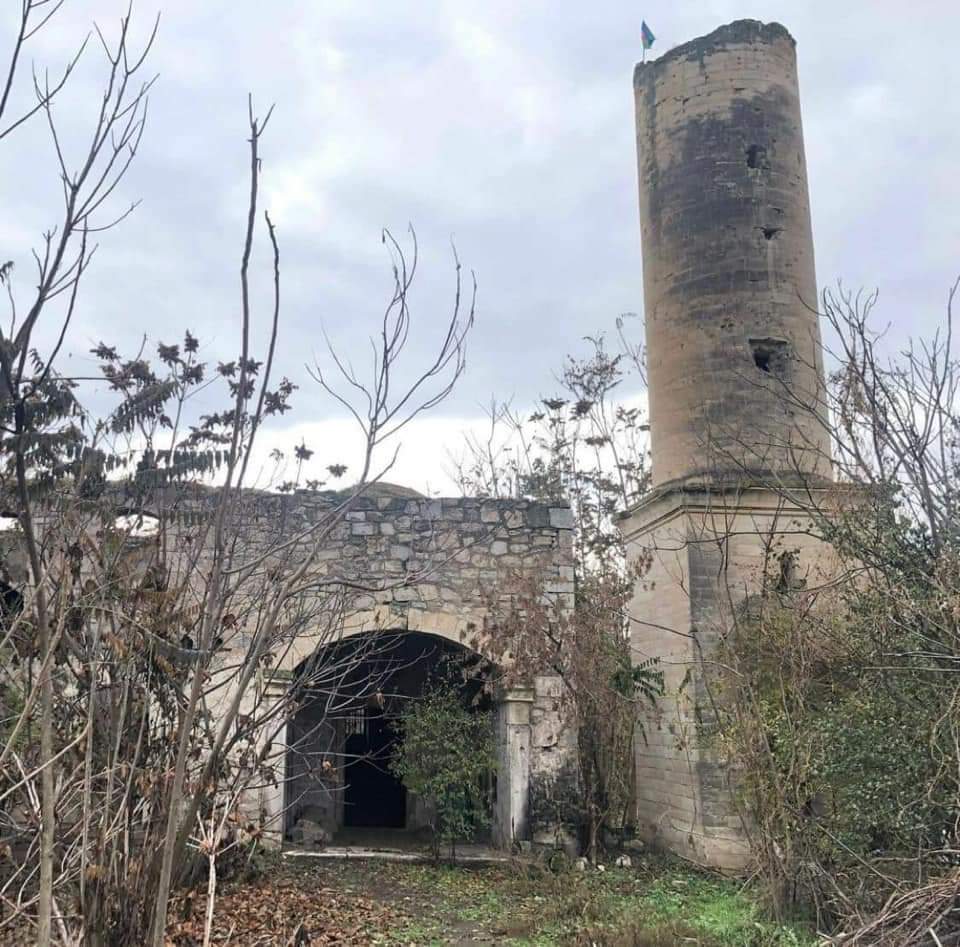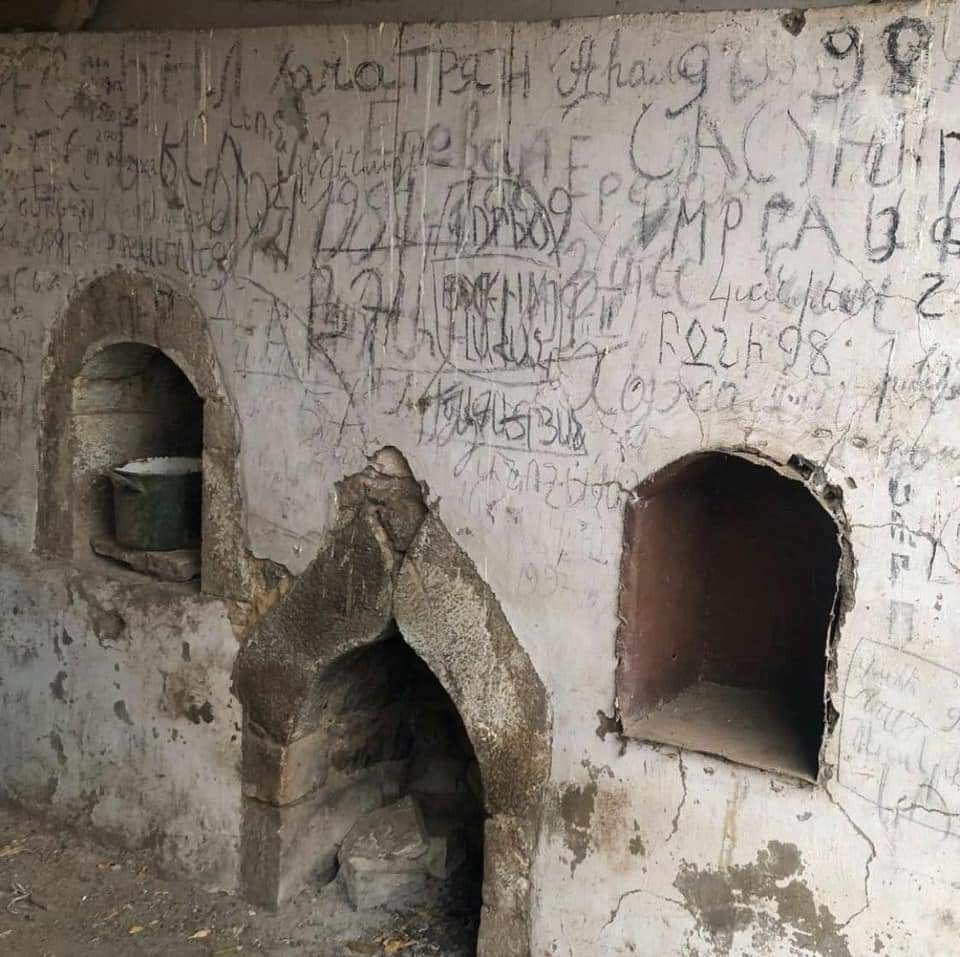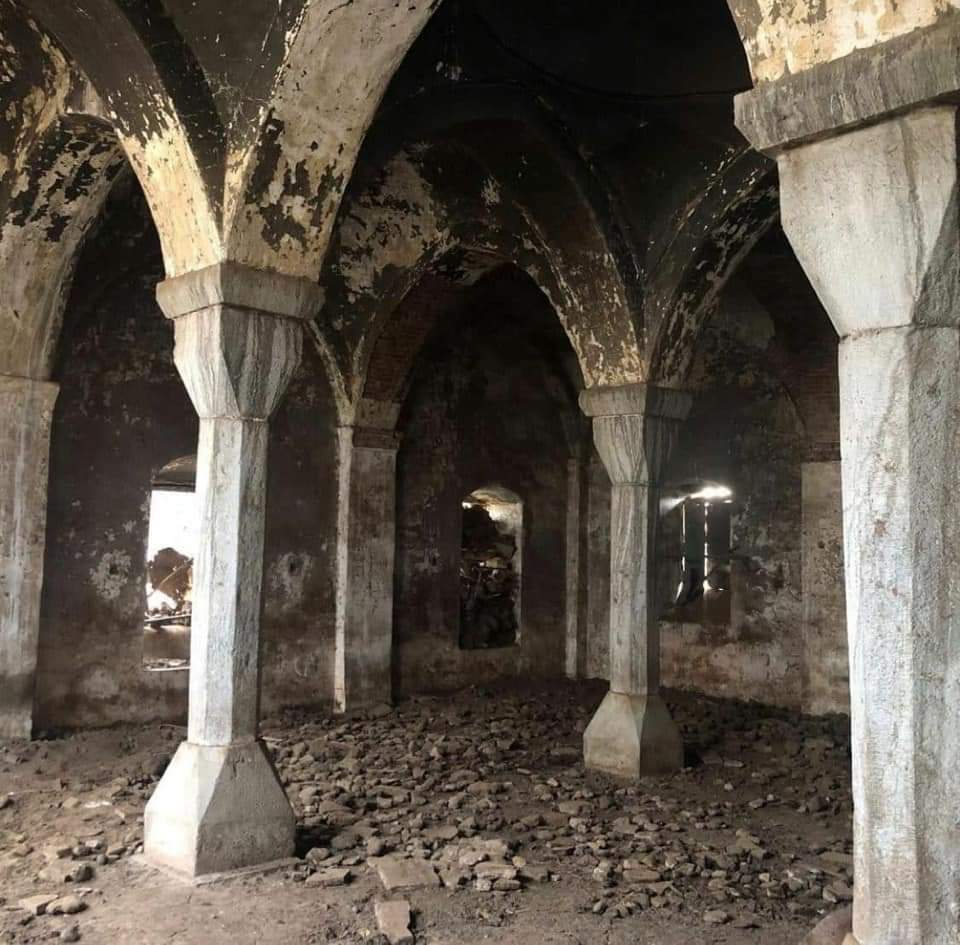Mosque in the Horadiz settlement (Horadiz Mosque)
The Horadiz Mosque is located next to the ancient kehriz in the center of the Horadiz village. The general dimensions of it are 13.7×18.18m. According to the inscription on the façade of the Horadiz Mosque, the beginning of the construction of the Mosque dates back to 1890-1891 with the initiation of Haji Mullah Abdullah. However, due to some reason, the construction of the Mosque stopped for a while and it was only in 1908 Haji Mammadgulu, son of Haji Mullah Abdullah, completed this noble work. The other inscription o the façade of the Mosque proves that Haji Mammadgulu completed the construction. It is interesting to note that even though the initiators of the construction of the Mosque were Haji Mullah Abdullah and his son Haji Mammadgulu, the Mosque did not name with their name. The assumption for this is that, despite the initiators, all residents of the village bore the expenses of the Mosque and worked in its construction. It is assumed that due to this reason the Mosque stayed nameless and just identified and mainly functioned as Juma Mosque of Horadiz.[1]
The Horadiz Mosque consists of two floors. On the first floor, there are four octagonal stone columns in the prayer hall of the Mosque that separate the hall into three naves. On the second floor opposite the altar of the Mosque, there is a glass gallery for the use of the women, which contains the idea of interior design. The balcony that made out of wood on the top façade on the side of the portal in front of the windows on the second floor of the Mosque distinguishes it from other mosques of the Karabakh region and bears resemblance to the normal residential building rather than the religious monument. These wooden balconies have a certain function during religious ceremonies. In accordance with the old residents of the Horadiz settlement, mullah, akhund or other influential persons of the settlement used these balconies for addressing local people.[2]
Another distinguishing feature of the Horadiz Mosque is the existence of the 10 stone inscriptions on the façade and portal of it. The inscriptions are in a different geometric shapes. “For instance, the four stone inscriptions between the windows of the ground floor are circular, the one on the top of the portal – trapezoid, those on the right and left of the entrance – rectangular, the stone which is the completion of the entrance – arch-shaped and the seat of the one relatively above is straight and the top is semicircular. Like these stones that differ in their geometric form, the inscriptions differ in the content as well. Those inscriptions related to the religious themes on the side and over the entrance mostly attract attention”.[3]
It has to mention that there was a plan for restoration of the Horadiz Mosque before the occupation of the district by the Armenian Armed Forces in 1993. However, the occupation not only interrupted the restoration but also led to the demolishing of the Mosque during its 27 years of occupation by Armenians.
[1] Garabaghli, Rizvan, “Monuments of Architecture in Fizuli (Mosques)”, Problems of Arts and Culture: International scientific journal, No. 1(67), 2019, pp. 67-68.
[2] Garabaghli, “Monuments of Architecture in Fizuli (Mosques)”, p. 67.
[3] Garabaghli, “Monuments of Architecture in Fizuli (Mosques)”, p. 67.


